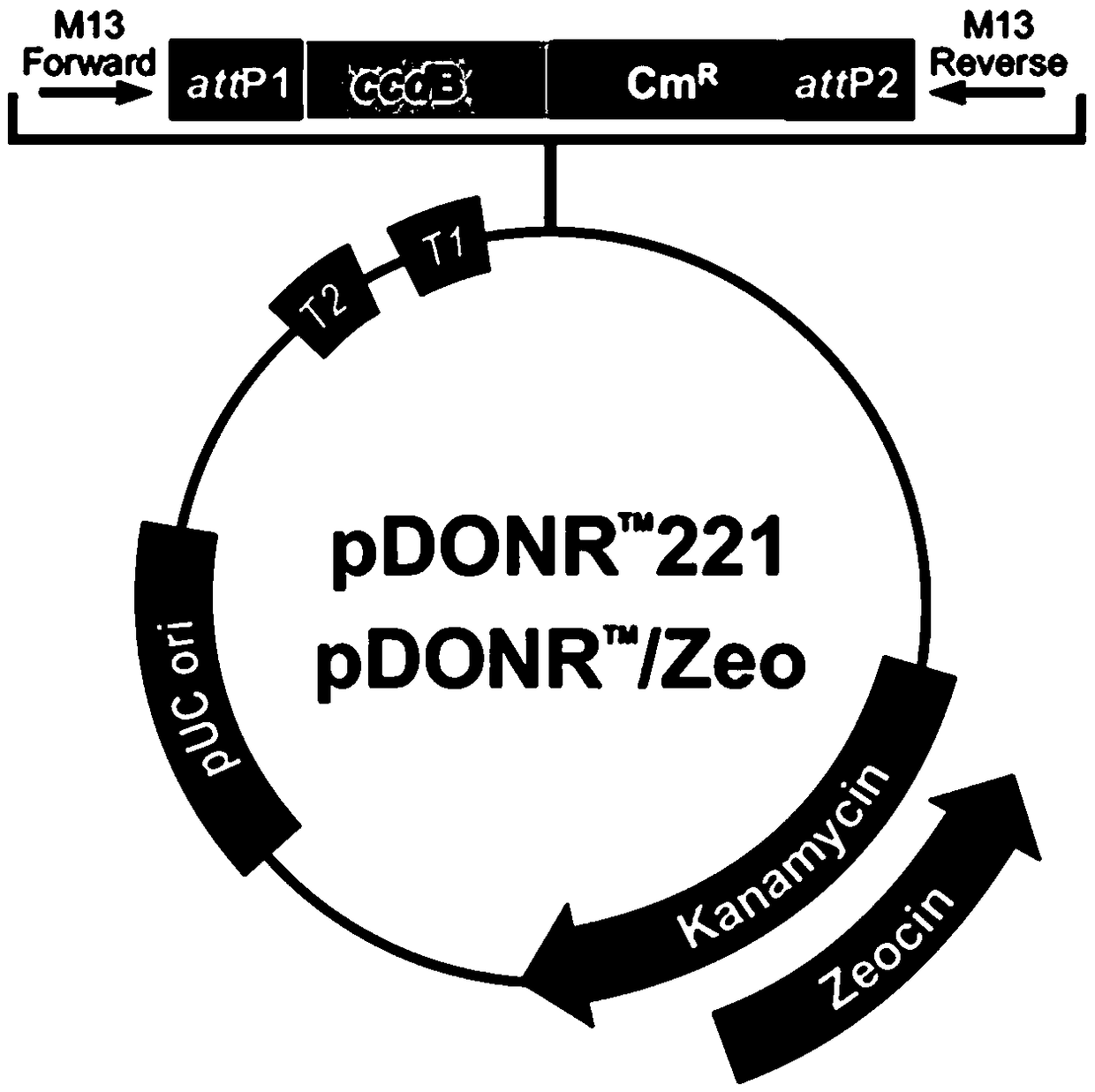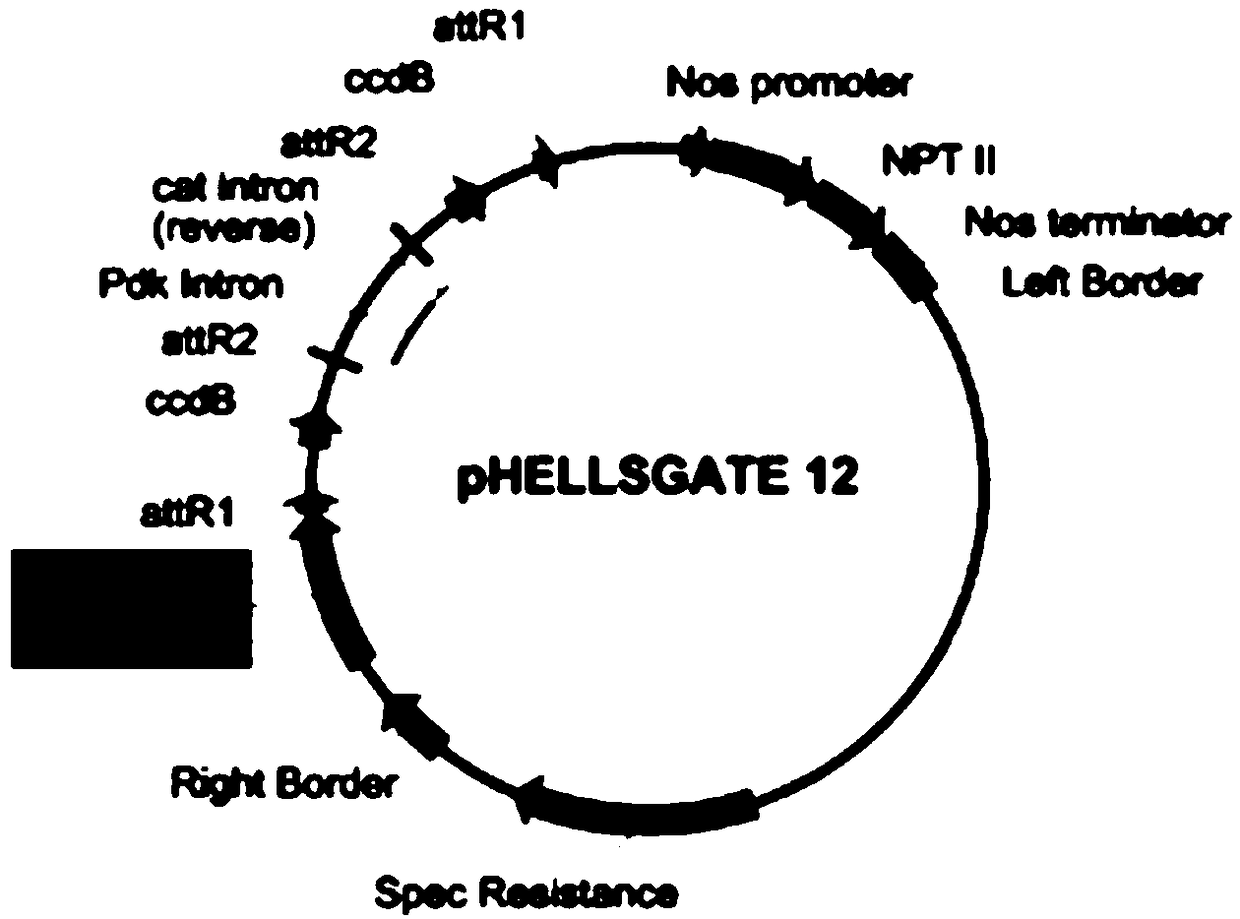Cloning method and application of tobacco arsenic transportation gene NtNIP7-1
A technology of gene transfer and cloning method, applied in the field of genetic engineering, can solve the problem that the function of tobacco has not been reported yet, and achieve the effects of huge economic benefit potential, reduced arsenic content, and broad application prospects.
- Summary
- Abstract
- Description
- Claims
- Application Information
AI Technical Summary
Problems solved by technology
Method used
Image
Examples
Embodiment 1
[0046] clone NtNIP7-1 Gene
[0047] Tobacco leaf cDNA was used as a template, and primers were designed according to the tobacco genome database information, and the NtNIP7-1 The PCR amplification of the gene was carried out to obtain the PCR amplification product, and the designed primers were as follows:
[0048] Forward primer: 5'- ATGGCTAAAGATCAATTGCAAGTGC -3';
[0049] Reverse primer: 5'-TTAAACTGGAATTGTTTGTGCATTAT -3';
[0050] The PCR reaction system and amplification conditions are as follows:
[0051]
[0052] The amplified PCR product was electrophoresed on a 0.8% agarose gel, and the gel electrophoresis results were as follows: figure 1 As shown, after electrophoresis, the PCR product purification kit from Qiagen was used to recover and purify the PCR product according to the product instructions, and sent to Invitrogen for sequencing to verify the sequence results.
Embodiment 2
[0054] Construction of Plant RNAi Vectors
[0055] In Example 1 NtNIP7-1 The full-length fragment is used as a template, and the primers containing the gateway adapter sequence are used for PCR amplification. After the PCR product is purified, the amplified product is inserted into the pdonr-zeo vector of Invitrogen Company through BP reaction (see figure 2 ), the good BP reaction carrier of the building block will be NtNIP7-1 Fragment replacement into PHellsgate12 RNAi vector (see image 3 )middle.
[0056] (1) The gateway reaction primer sequence is as follows:
[0057] NtNIP7-1 _F
[0058] 5'- GGGGACAAGTTTGTACAAAAAAAGCAGGCTGCtcacgaaaatgcaccaaaaccagg-3';
[0059] NtNIP7-1 _R
[0060] 5'- GGGGACCACTTTGTACAAGAAAGCTGGGTCgataaagggtaatcgccaccaatacc -3'
[0061] (2) PCR reactions were performed using Phusion high-fidelity polymerase for PCR cloning.
[0062] The PCR reaction system and conditions were the same as in Example 1.
[0063] (3) BP response:
[0064] (a) Pr...
Embodiment 3
[0079] Agrobacterium-mediated transformation of tobacco and identification of transgenic plants
[0080] (1) Transformation of Agrobacterium by freeze-thaw method
[0081] Add 1 μg (200 ng / μL) pHellsgate12 recombinant vector to 100 μL competent Agrobacterium LBA4404, mix well, let stand on ice for 5 min, freeze in liquid nitrogen for 5 min, and then take it out from the liquid nitrogen. Place in a water bath at 37°C for 5 minutes, then let stand on ice for 5 minutes, add 500 μL LB solution, resume cultivation at 28°C for 4 hours under sufficient shaking conditions, and finally spread the bacterial solution evenly on the selective plate culture medium at 28°C for 48 h.
[0082] (2) Tobacco variety Yunyan 87 was transformed by leaf disc method.
[0083] The specific method is as follows:
[0084] (a) Under aseptic conditions, put the tobacco Yunyan 87 seeds into the EP tube and rinse them with sterile water for 2-3 times;
[0085] (b) Soak in 75% alcohol for 30-60 s;
[008...
PUM
 Login to View More
Login to View More Abstract
Description
Claims
Application Information
 Login to View More
Login to View More - R&D
- Intellectual Property
- Life Sciences
- Materials
- Tech Scout
- Unparalleled Data Quality
- Higher Quality Content
- 60% Fewer Hallucinations
Browse by: Latest US Patents, China's latest patents, Technical Efficacy Thesaurus, Application Domain, Technology Topic, Popular Technical Reports.
© 2025 PatSnap. All rights reserved.Legal|Privacy policy|Modern Slavery Act Transparency Statement|Sitemap|About US| Contact US: help@patsnap.com



